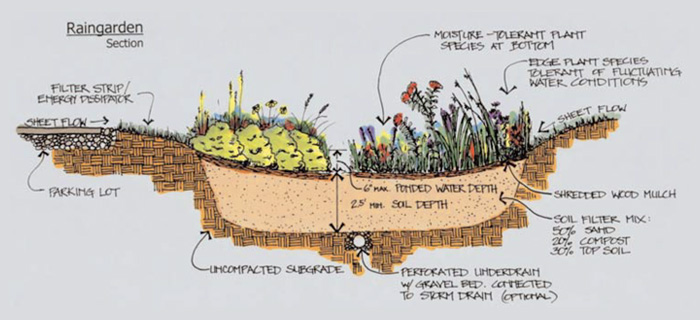Rethinking Lifestyle
Water in a Drought

This summer was very hot and dry. My friend asked me to watch his property since he spent the summer out of province. As the hot, dry conditions persisted, I found his fruit trees and bushes in worse condition every time I checked them. It was a serious challenge to water them just enough just to keep them alive! His lawn – like everyone else’s, apparently – was a lost cause. And that’s just a yard in La Broquerie. I can’t imagine being a farmer in Manitoba’s Interlake region this year.
This experience should have a lot of people thinking about water security. After all, what will happen if we have another year like this next year? As our climate changes, we know that both droughts and floods will be more frequent and severe. Here in Southern Manitoba, we’re lucky to have a plentiful source of aquifer water for drinking and irrigation, but that’s not as sure a thing as we might think. As I write, CanWhite Sands Corp. is developing a mine in Vivian, MB to extract silica sand from the aquifer that provides Steinbach’s and most of southeast Manitoba’s drinking water. If the company’s promise that it will not pollute the water with heavy metals fails to come true, there’s no guarantee that the water will continue to be safe to drink, let alone to water crops and livestock. So now, finding ourselves at the (hopefully) tail end of a severe drought – what can we do to prepare for these new realities?
One basic step is to collect the floodwater available in spring and during severe rain events, for use throughout the summer. At a large scale, strategies like retaining water on farmers’ fields and municipal land are ideal for lowering the impacts of severe dry spells while also reducing the severity of periodic flooding. At a smaller scale, one great option is the Seine Rat Roseau Watershed District’s Rain Garden program, which offers money to install beautiful gardens designed to capture and infiltrate surface water runoff or sump pump discharges at schools & public spaces – and even private residences. Of course, rain barrels and water tanks are great tools for storing water for your garden. Hooking them up to a pump and a drip irrigation line, you can water your garden extremely efficiently. When calculating a surface’s collection potential, it’s helpful to know that 1mm of rain over 1m2 provides 1L of water. So a 93m2 (1000sf) roof can collect 1860L in a single 20mm rainfall!
As any gardener knows, though, irrigation systems can be costly and take time and effort to maintain. Perhaps the first step to increasing water resilience should be improving your soil’s capacity to absorb and hold on to water. According to soil scientists, increasing organic matter in your soil by 1% can increase its water holding capacity by 20,000L/acre. For a big 1000sf garden, that equates to an additional 460L of water, stored & ready for your plants to use, in the top 6 inches of soil; no tanks or pumps or hoses required! A good rule of thumb is to add 1–2 inches of compost/year in clayey soils, or up to 3 inches in sandy soils, where it has the most beneficial effect. Other techniques include reduced tilling, and always keeping the soil covered with mulch. For this, you can use (unsprayed) leaves and lawn clippings, or just leave the compost that you add annually on the surface.
Water is so easy to take for granted, and yet is arguably the most valuable substance on earth. As summers like this one have shown us, people who store and use it wisely will benefit the most.




